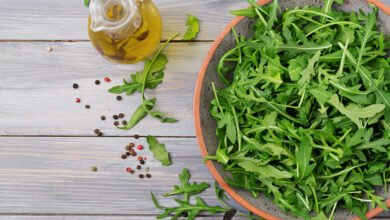Hydrating and Moisturizing Aren’t the Same for Your Skin

Maintaining healthy and radiant skin requires understanding its needs. Among the most common skincare terms, “hydrating” and “moisturizing” are often used interchangeably, but they serve distinct purposes. Misinterpreting these can lead to ineffective skincare routines. Let’s delve into what each means, their differences, and how to incorporate both into your routine for glowing skin.
What Does Hydration Mean in Skincare?
Hydration refers to increasing the water content in your skin cells. Proper hydration makes your skin appear plump, smooth, and radiant. Dehydrated skin, on the other hand, looks dull, flaky, and can feel tight.
Hydrating products, such as serums and toners, typically contain humectants like:
- Hyaluronic Acid: Attracts water from the environment into your skin.
- Glycerin: Binds water to your skin, keeping it hydrated.
- Aloe Vera: Soothes and provides a refreshing boost of hydration.
Hydration is essential for all skin types, including oily skin, as dehydration can trigger excess oil production to compensate for the lack of water.
What Does Moisturizing Mean in Skincare?
Moisturizing focuses on sealing in hydration and preventing water loss from your skin. It helps to strengthen your skin’s barrier and maintain softness.
Moisturizers typically contain emollients and occlusives such as:
- Shea Butter: A natural emollient that softens and conditions.
- Oils (e.g., jojoba, argan): Form a protective layer to lock in moisture.
- Petrolatum or Beeswax: Occlusive agents that prevent water evaporation.
Moisturizing is especially critical for those with dry skin types to combat flakiness and irritation caused by a lack of natural oils.
Key Differences Between Hydrating and Moisturizing
| Aspect | Hydrating | Moisturizing |
|---|---|---|
| Purpose | Adds water to the skin | Locks water in and prevents water loss |
| Primary Ingredients | Humectants (e.g., hyaluronic acid) | Emollients and occlusives (e.g., oils) |
| Skin Concern | Dehydration (lacks water) | Dryness (lacks oil) |
| Skin Feel | Tight, dull | Rough, flaky |
Understanding these differences can help you choose the right products and address specific skin concerns effectively.
How to Tell if Your Skin Needs Hydration or Moisture
- Dehydrated Skin:
- Feels tight, especially after cleansing.
- Looks dull with an uneven texture.
- Fine lines become more visible.
- Dry Skin:
- Feels rough and flaky.
- Often sensitive or itchy.
- May appear ashy or patchy.
It’s worth noting that your skin can be both dry and dehydrated simultaneously, requiring a combination of hydrating and moisturizing products.
Building a Skincare Routine That Balances Both
- Start with a Gentle Cleanser
Choose a hydrating cleanser that won’t strip your skin of natural oils. Look for ingredients like ceramides and glycerin. - Incorporate a Hydrating Serum
Use a serum containing hyaluronic acid or glycerin to replenish your skin’s water content. Apply it on damp skin to maximize absorption. - Layer a Moisturizer
Follow up with a moisturizer that suits your skin type. For dry skin, opt for rich creams; for oily or combination skin, lightweight gels or lotions work best. - Don’t Skip Sunscreen
UV damage can worsen dehydration and dryness. Use a broad-spectrum SPF daily.
Hydrating vs. Moisturizing Products: How to Choose
- For Dehydrated Skin: Prioritize hydrating products like toners, mists, and serums.
- For Dry Skin: Opt for heavier moisturizers and oils that provide long-lasting nourishment.
- For Combination Skin: Use lightweight hydrating products and apply moisturizers only to dry areas.
Common Myths About Hydration and Moisturization
- “Oily skin doesn’t need hydration.”
This is false. Even oily skin can be dehydrated and benefit from hydrating products. - “Moisturizers can hydrate the skin.”
While some moisturizers may contain hydrating ingredients, they are primarily designed to seal in moisture. - “Water intake is enough for skin hydration.”
Drinking water is essential, but topical hydration is crucial for targeting the skin’s outer layers.
Conclusion
Hydration and moisturization are not mutually exclusive but complementary steps in skincare. While hydration replenishes water in the skin, moisturization ensures it stays locked in. Both are essential for maintaining a healthy, glowing complexion.
By understanding your skin’s needs and choosing the right products, you can create a balanced routine that addresses both hydration and moisture, leading to healthier and more resilient skin.



